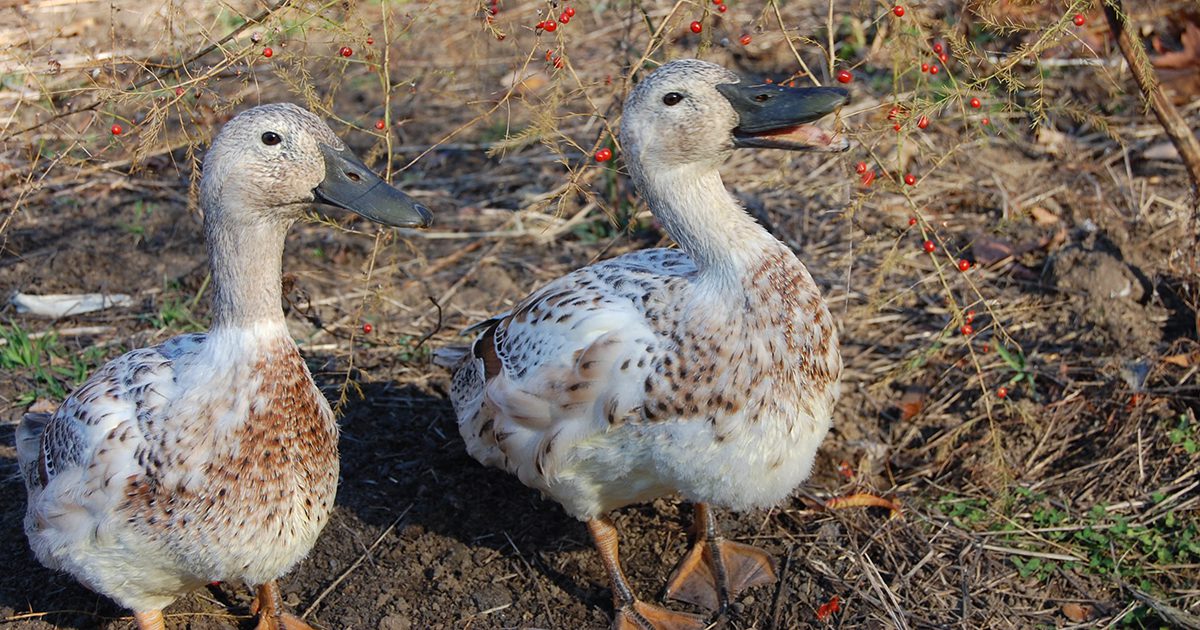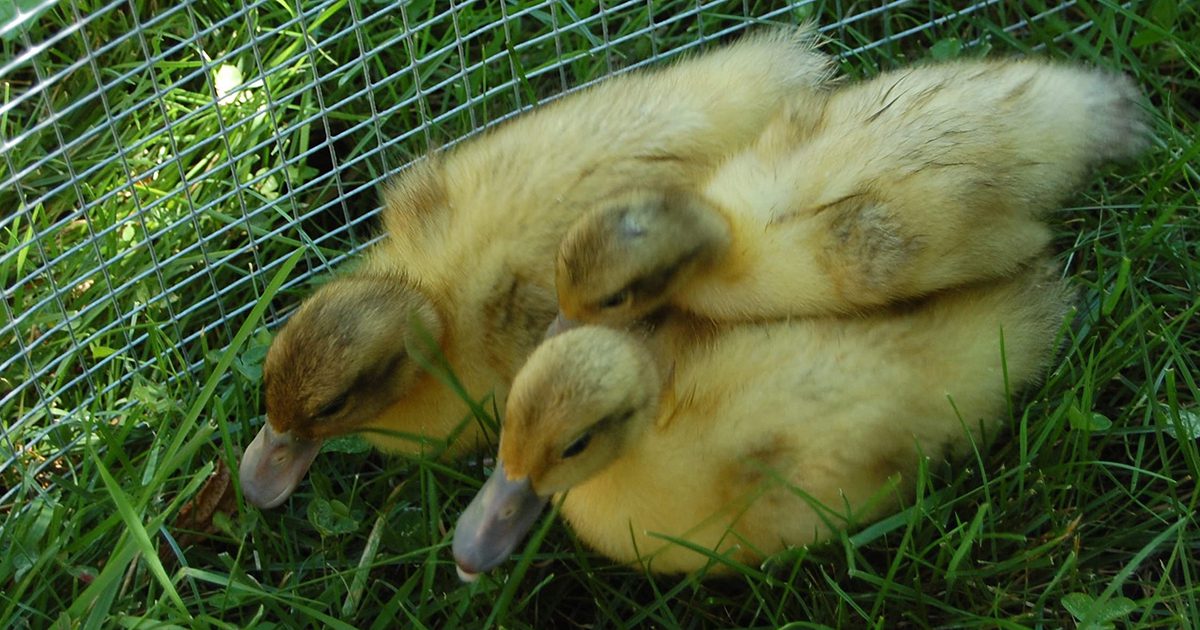Making Way for Ducks
As loveable as ducks are, they are – undeniably – fowl, exuberant in start-to-finish mess-making.
Domesticated ducks routinely splash into full bowls of food or water, and – if the spirit moves them – defecate there. They rinse their nostrils while eating, rapidly turning clean water into a gray slurry that resembles mine tailings.
If you place moistened mash before ducks, you’d best step back fast to avoid a whirlwind of flying grains. Dabbing their bills with jack-hammer rapidity, they splatter food in a wide arc. At meal’s end they clean up only inadvertently – scavenging strewn bits and amicably eating stray grains off each other.
When all their sodden grain and foraged insects get digested, the ground is littered with colorful wet droppings. Swimming tubs become murky olive effluent lagoons, dotted with floating feathers.
The copious manure may turn off some prospective duck owners, but it’s one of the birds’ greatest assets – once mixed with garden scraps, food waste and pine shavings into a percolating compost pile. Sink a spade into that mound, warmed by the work of microbes, and you catch a whiff of hope, a fragrant sense of the invisible lives that sustain us.
“There is no doubt about it,” E.B. White observed in ‘A Winter Diary,’ his 1941 essay, “the basic satisfaction in farming is manure which always suggests that life can be cyclic and chemically perfect and aromatic and continuous.”
Ducks deliver that reassurance of life ongoing, offering up eggs and the secret sauce for rich compost. Being unfailingly happy and harmonious creatures, they share other gifts as well.
 Many duck breeds are good foragers and eager participants in fall garden cleanup. Photo by Marina Schauffler.
Many duck breeds are good foragers and eager participants in fall garden cleanup. Photo by Marina Schauffler.
Closing the loop
As much as we had done with cover crops and wood chip mulch to improve the soil of our berry patches and gardens, we couldn’t generate enough organic matter from plant material and food waste.
Having unwittingly introduced many noxious weeds through manure brought in over the years, I was ready for a source on-site. Farming can be made more sustainable by closing the loop – reducing inputs from afar and transforming animal waste into soil-building compost or energy (like the biodigesters used on some dairy farms).

Unlike humans, ducks show little propensity for individualism, competition and hierarchy. They often function as a unit, moving in formation, rafting up to rest and reflexively sheltering the most vulnerable duck. Photo by Marina Schauffler.
Ducks, despite their diminutive size, generate an impressive volume of waste. Agricultural engineers report that they beat out every other category of farm animal when measured in “total manure” generated per kilogram of “live animal mass.”
Duck manure has less ammonia than chicken manure, making it more pleasant to manage, and gentler on plants and soils when applied directly. The birds can do much of that application themselves when in a mobile duck tractor that provides protection while they forage.
The tractor term originated with chickens, who scratch and till the soil more than web-footed ducks, who drill with their bills in search of slugs, worms and insects. Yet the tractor concept applies better to ducks in one way; they often forage in tight formation to help them stay alert to predators.
Finding safety in each other
The country life is inescapably “fraught with menace,” White wrote in his 1940 essay ‘Farm Paper,’ even as it reveals a “beautiful natural balance everywhere discernible.” The ducks that contribute to the cycles of life on our land are themselves highly vulnerable to death – from hawks, owls, foxes, racoons, coyotes, fishers and even our less than wholly domesticated dog.
To stay safe, ducks rely on acute sight and hearing. They can see two to three times as far as humans and can register a far broader spectrum of colors. Their characteristic head tilt enables their eyes, located on the sides of their heads, to get a better panoramic view, spotting threats like the distant speck of a hawk circling.
The instinctual defenses of ducks emerge early. Hatchery ducklings are typically shipped by mail as soon as they emerge and spend their first two days of life piled together in a cardboard box. Our birds clearly imprinted on each other then, never knowing their mother or having any adult duck to guide their learning. From that challenging start, they learned to live as a synchronized team.
Even in the mealtime scramble, no signs of strife or exclusion emerged. One of the three ducklings was markedly smaller, and the larger two nearly always slept and explored with the littlest tucked between them. Rather than being the runt at the bottom of a harsh pecking order, she was sheltered and warmed by the others.
The birds, now fully grown, go about their daily rituals – dunking, preening and foraging – murmuring softly to each other or resting in companionable silence.
Their calming presence exerts a magnetic force, and we find ourselves gravitating to them. In a tense and anxious time, when our country is strained by divisions, it is humbling and restorative to be in the presence of such peaceable creatures.
With no one to teach them, these young birds instinctively grasped the protective power of looking out for one another. That universal impulse feels more vital now than ever before.
© Marina Schauffler, 2020. All Rights Reserved. Column reprints available upon request

